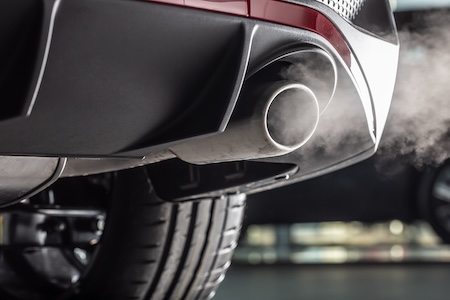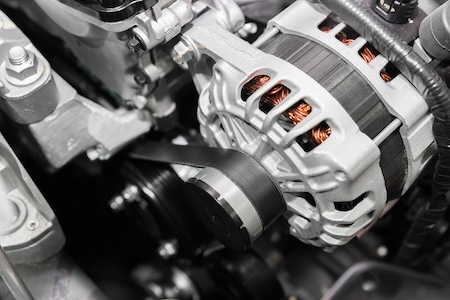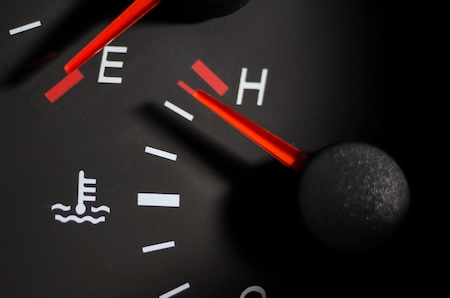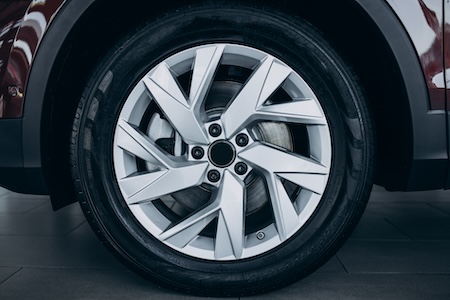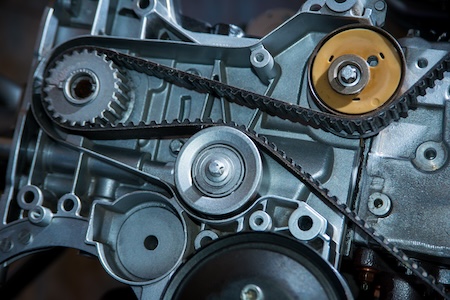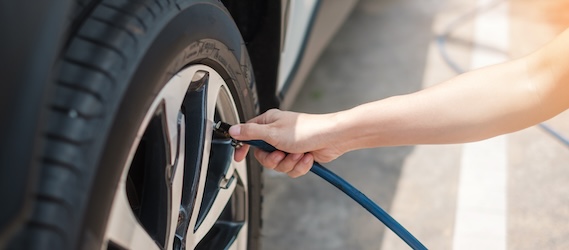Quick, what do you think of when someone says “car maintenance?” Do you think oil changes, brake pads, maybe even tire rotations?
There’s one system quietly working overtime, day in and day out, that often gets ignored:
Your exhaust system.
As you’re driving in or around Denver, you need to pay attention. Between winter driving conditions, altitude changes, and temperature swings, your exhaust system works harder than you might think.
So let’s take a closer look at what it does, what can go wrong, and how regular exhaust system maintenance can save you from costly repairs.
What Does the Exhaust System Actually Do?
Most people assume the exhaust system’s job is just to muffle engine noise. While that’s partly true, it’s only one piece of the puzzle. The exhaust system:
- Removes toxic gases (like carbon monoxide, nitrogen oxides, and hydrocarbons) produced during combustion
- Directs those gases safely away from you and your passengers
- Reduces emissions through components like the catalytic converter
- Improves fuel efficiency by optimizing airflow
- Supports engine performance by reducing back pressure
If any part of that system fails, it doesn’t just lead to a noisier car; it affects safety, fuel economy, and environmental impact.
Key Parts of Your Exhaust System
Do you know what car parts are included in an exhaust system? Simply by knowing a little more about the system can help you spot problems early. A car’s exhaust system includes:
- Exhaust Manifold: Connects the engine to the rest of the exhaust system, collecting gases from cylinders.
- Oxygen Sensors: Monitor oxygen levels in exhaust to help manage fuel mixture.
- Catalytic Converter: Converts harmful gases into less toxic emissions.
- Resonator: Helps reduce engine noise and vibration.
- Muffler: Diminishes engine noise further, especially at higher speeds.
- Pipes: Carry exhaust gases safely through and out of the system.
- Tailpipe: Final exit point for exhaust gases behind your vehicle.
Any of these parts can wear out, rust, or fail, especially in Denver’s extreme driving conditions.
Common Exhaust Problems We See in Denver
Think about what your car faces each day. Cold mornings. Hot afternoons. High volumes of water from flash storms. Snow that can pile up in just a few hours. Denver’s altitude, climate, and roads create a unique set of challenges. And all that can add up and create problems with your exhaust system. Here are some common exhaust issues we see in our local shop:
Rust and Corrosion
Road salt from snowy winters and moisture buildup under the car can eat away at metal pipes and mufflers. Denver’s road salt is typically made from mag chloride, but it can and will damage your car if not well cared for. Over time, this leads to leaks or even full-on breaks in the exhaust line.
Loose or Broken Hangers
The exhaust system is held in place by hangers and brackets. Potholes, speed bumps, or off-road adventures (even by accident) can knock these loose, leading to vibrations, rattling, or dragging parts.
Cracked or Warped Manifold
The exhaust manifold expands and contracts constantly with temperature changes. Over time, cracks can form, which may cause loud ticking noises or exhaust leaks into the cabin.
Failed Catalytic Converter
Colorado’s emissions requirements make this component even more important. A failing converter leads to decreased performance, failed emissions tests, and sometimes a rotten egg smell.
Check Engine Light (O2 Sensor Issues)
Faulty oxygen sensors throw off your air/fuel mixture, which hurts fuel economy and performance. If your “Check Engine” light is on, it could be exhaust-related.
Warning Signs You Need Exhaust Maintenance
Not sure if there’s a problem? The good news is you will experience telltale signs as things begin to wear down. Here are a few symptoms that signal it’s time for a professional inspection:
- Loud rumbling or roaring noises from the tailpipe
- Rattling or vibrating noises under the vehicle
- Decreased fuel economy
- Sluggish acceleration or poor engine performance
- Check engine light (often tied to O2 sensors or catalytic converter)
- Unusual smells (rotten eggs, strong fumes, or burning rubber)
- Visible rust or hanging parts under the car
If you notice any of these, don’t wait. Exhaust issues can escalate quickly, and they can even affect your health.
Why Exhaust Maintenance Matters for Your Health
This isn’t just about performance or saving money. It’s about safety.
Leaking exhaust systems can allow carbon monoxide to enter the cabin of your vehicle. It’s odorless, colorless, and extremely dangerous. Even short-term exposure can lead to headaches, dizziness, or nausea. Long-term exposure can be fatal.
If you ever feel tired or lightheaded while driving with the windows up, especially in winter, it could be an exhaust leak.
Never dismiss a fender bender as something you’ll check later. A break in your car’s exhaust system could allow CO to enter your vehicle. And studies show CO can build up to dangerous levels in as little as one minute and 24 seconds.
Don’t take that risk. Regular inspections are the best way to stay safe.
How Often Should You Inspect Your Exhaust System?
There’s no dashboard light just for exhaust, so proactive maintenance is key. Here’s what we recommend:
- Every 6 months or every oil change—ask your technician to take a look underneath
- Before and after winter—to spot corrosion or damage from salted roads
- When your car passes 100,000 miles—many components wear out around this point
- Before emissions testing—especially if you’re due for Colorado’s Air Care program
Even if nothing seems “wrong,” catching problems early is the best way to save money and avoid larger repairs later.
How We Handle Exhaust System Maintenance at Our Shop
At our Denver shop, we offer full exhaust inspections and repairs. Here’s what you can expect:
- Visual inspection for rust, cracks, leaks, and damage
- Pressure tests to check for hidden leaks or loose connections
- Oxygen sensor diagnostics if your check engine light is on
- Catalytic converter tests to ensure emission compliance
- Custom solutions—from minor repairs to full replacement if needed
We’ll give you the facts—no pressure, no upsells—so you can make the best decision for your safety and your budget.
And because we’re a family-run local shop, we treat your vehicle like it’s our own.
Don’t Let a Small Leak Turn Into a Big Problem
Exhaust system maintenance isn’t just emissions testing. It’s for every Denver driver who wants to stay safe, save money, and keep their vehicle in top shape.
Left unchecked, a small exhaust leak can cost you in fuel, performance, safety, and major repair bills.
But with regular inspections and a little attention, your car’s exhaust system will serve you well for years.
Need an exhaust inspection?
We’ve got your back. Book a visit with our trusted technicians and get peace of mind, before the next pothole or snowstorm hits.

